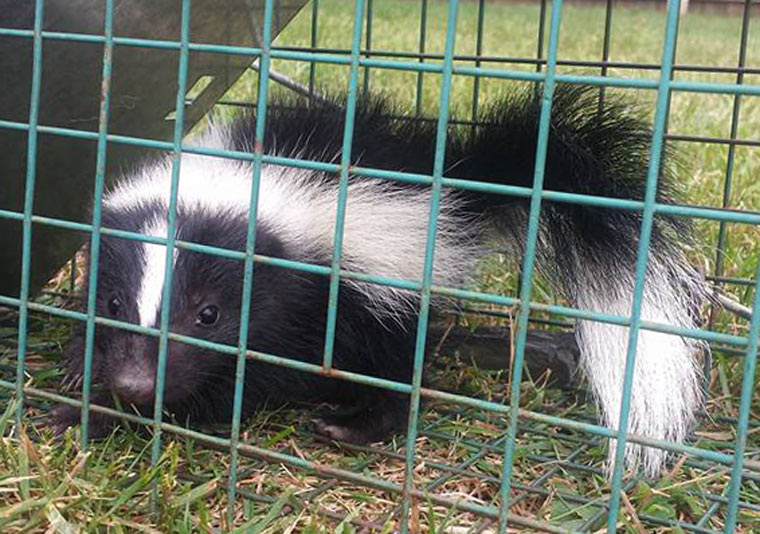- info@wildlife-removal.com
Call us for help in your town
Wildlife Removal Education
Can A Skunk Spray Multiple Times At Once?
Need skunk removal in your hometown? We service over 500 USA locations! Click here to hire us in your town and check prices - updated for year 2020.
One of the things that the humble skunk is most known for, is its ability to spray a nasty-smelling liquid around that terrifies predators away, and leaves those who have been covered in the liquid smelling like rotten eggs for days. It's not an animal you will want to get too close to. It’s also not an animal that you will want to sneak up on accidentally. Sadly, that’s how most human and skunk interactions happen, and even more so when other animals, such as dogs, are involved. You’ll be casually out walking your dog, the pooch will go sniffing after something, and when you go to investigate, you get sprayed by the black and white beast because it thinks you’re going to attack it. In reality, you probably didn't even know it was there.

Is skunk spray dangerous?
It’s not poisonous or venomous, if that’s what you're asking. It probably won't kill you, put it that way. It is a liquid that is very difficult to wash off, however, and this means that the skunk smell is likely to follow you around for some time.
If the liquid were to get into your eyes, mouth, or nose, it could cause eye-watering and stinging, and also irritation to the area, as well as the respiratory system. Again, this isn't likely to cause long-term damage, but is incredibly unpleasant, to say the least.
How far can a skunk spray?
Although experts have different opinions on this, it is generally considered normal for a skunk to spray a distance of ten to twenty feet. Some can’t squirt quite this far, and others can go a little further, but that's generally reported to be the ‘danger zone’. It is also reported that their spray can be within ten feet in terms of accuracy.
For the record, a skunk can spray from birth. They can spray before they have even learned how to walk, leave the nest, or even open their tiny eyes.
Where does the skunk spray come from?
Although it might look as if the spray is coming from the skunk’s waste region, the liquid itself isn’t anything to do with waste matter. In fact, it’s below the skunks tail, not far from the anus, stored in glands. When the skunk wants to spray, it turns around, lifts it tail, takes aim and then fires.
How many times can a skunk spray in one go?
This will depend on a number of factors. If the skunk sprayed an animal a couple of days ago, and then sprayed you today, it wouldn't have a ‘full tank of gas’ (so to speak) because it used some of it the other day. On a full tank — when the glands are full up and the skunk hasn't used some of the spray previously — it is thought that a skunk could spray up to six of seven times in quick succession.
The skunk will also turn to its spray defense last. It will do a number of other things before that, to try and persuade a predator to go away. It will stamp its feet to start with, and it will also make a lot of noise — pig-like squeals, whining, whimpering, barking, and even grunting noises. They can make quite the vast array of vocal noises, and many homeowners actually confuse them for other creatures at first, based on vocal noises alone.
How long does it take for skunk spray to regenerate?
Again, if we’re talking about a ‘full tank’, it is reported to take around seven to ten days for a skunk to fully reload the spray glands. Again, if the skunk didn't use all of its spray, it won't take quite that long to recharge. But from 0% to 100%, a week, or there about, is generally considered the norm.
Go back to the Skunk Removal page, or learn tips to do it yourself with my How to Get Rid of Skunks guide.


















